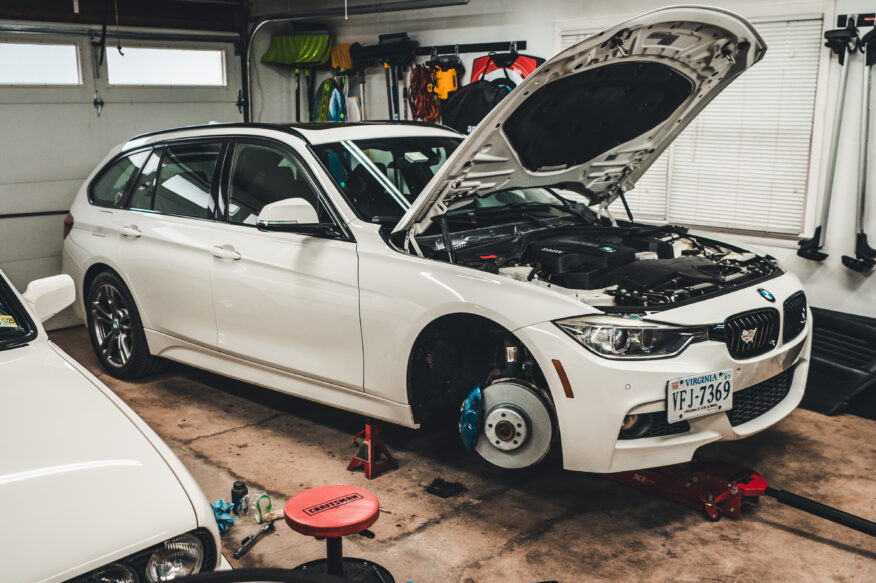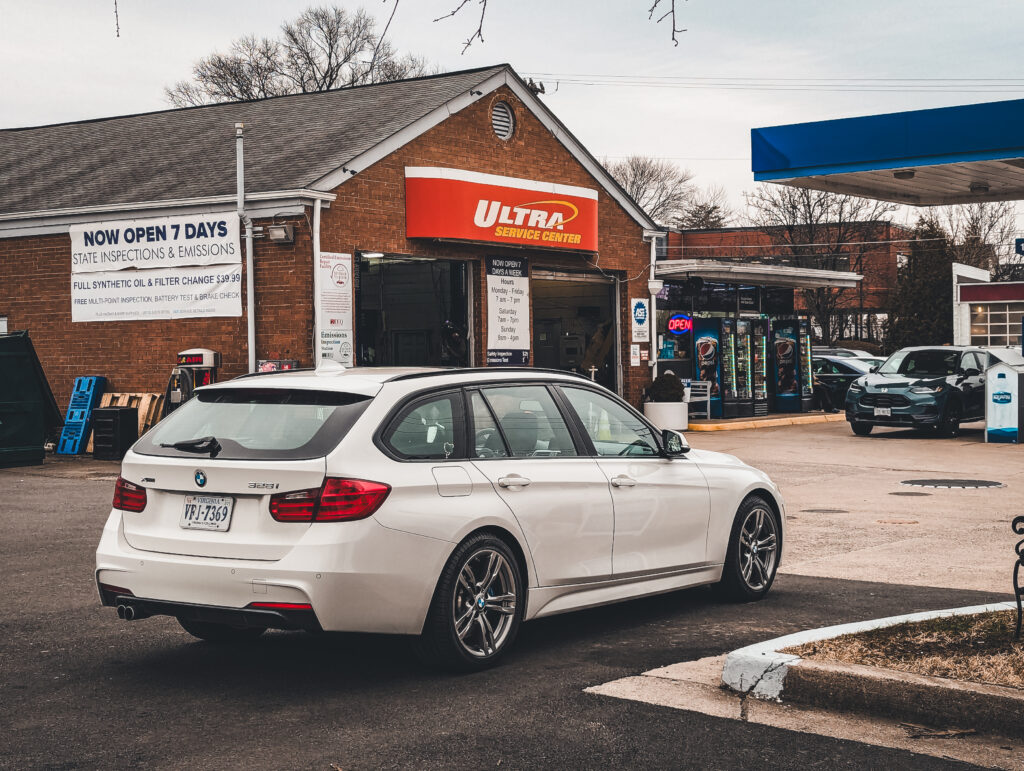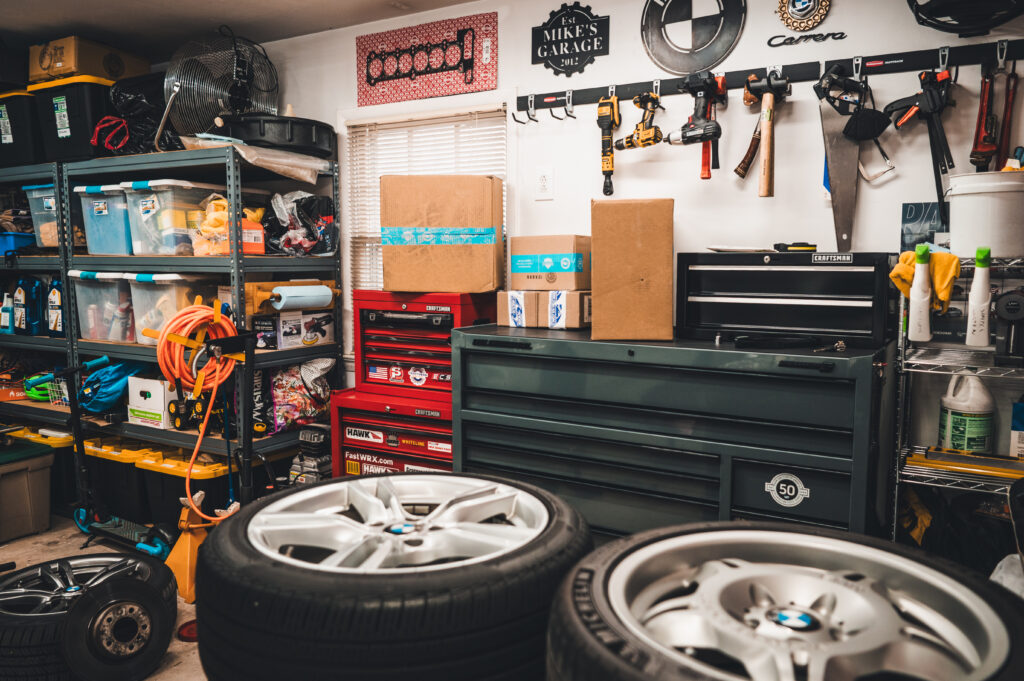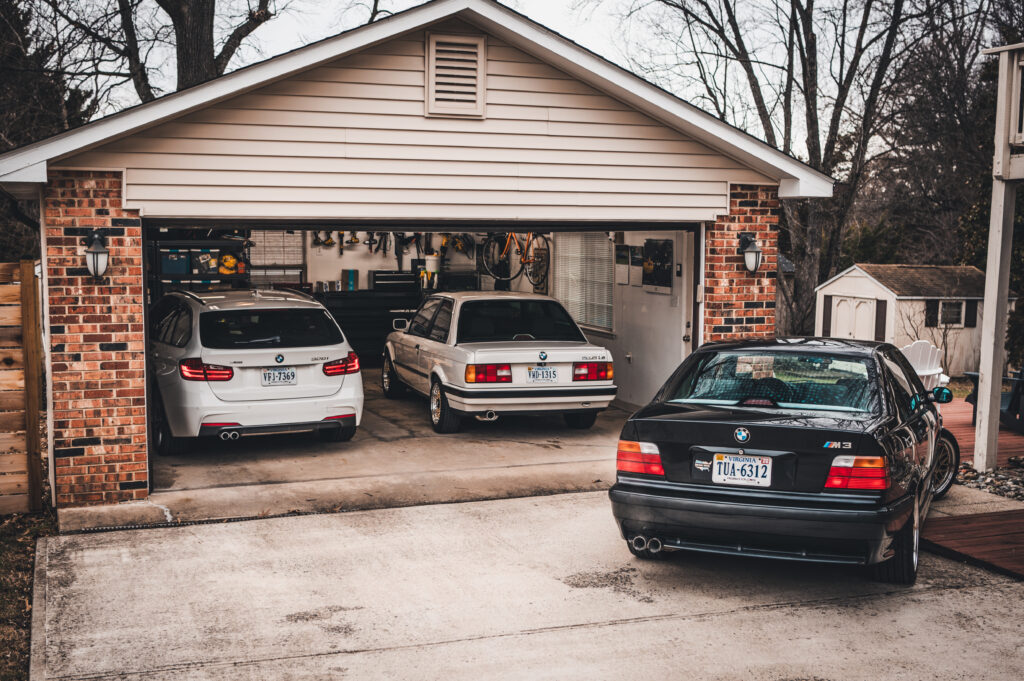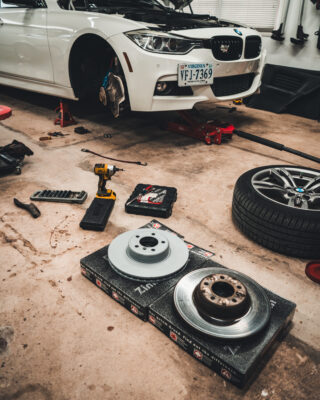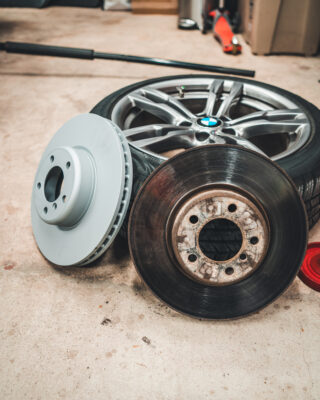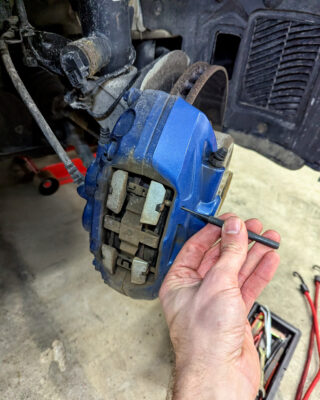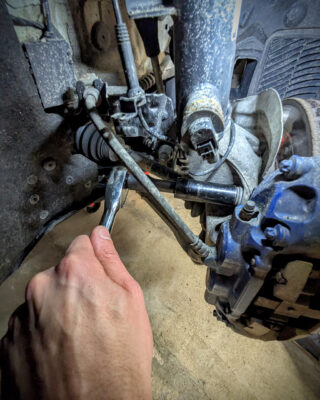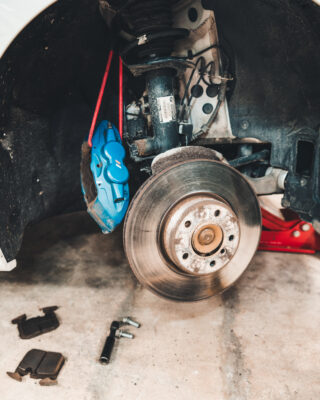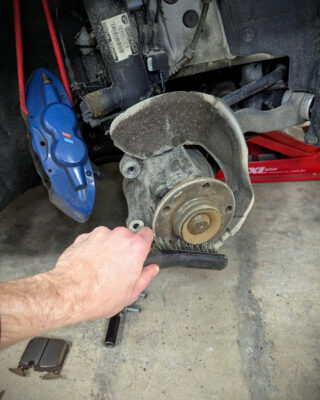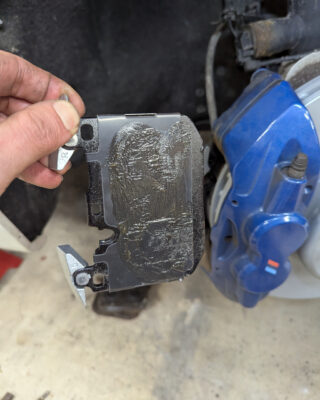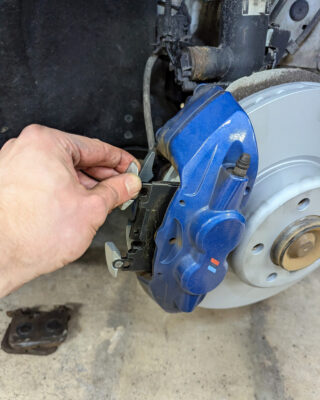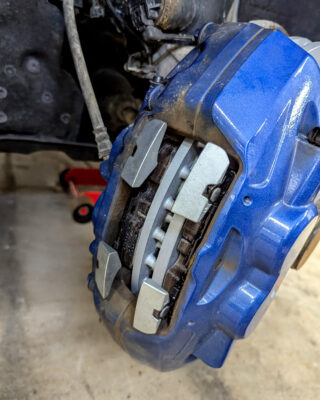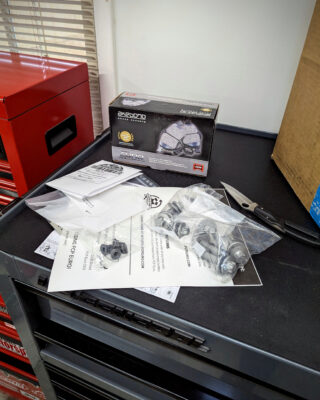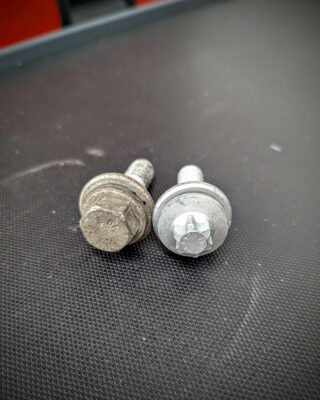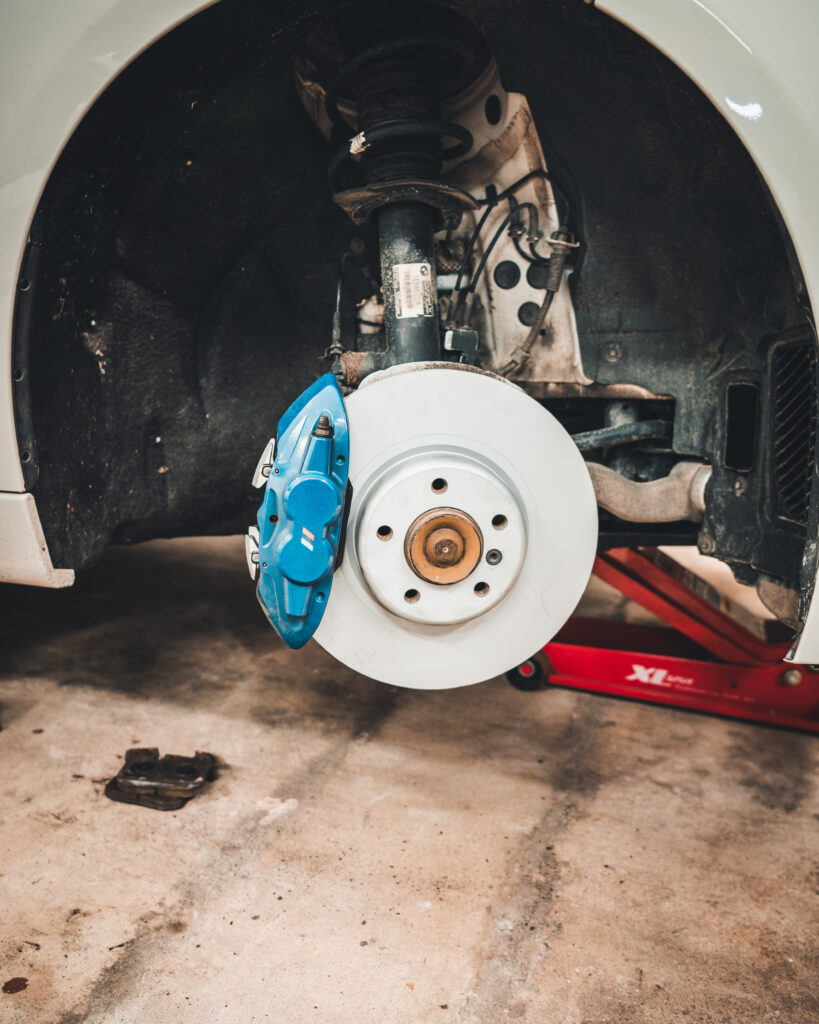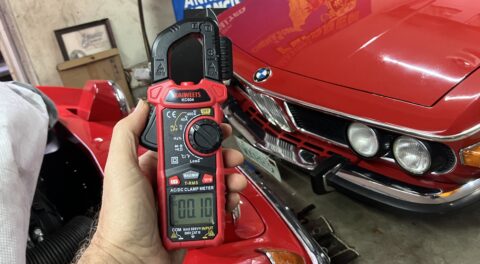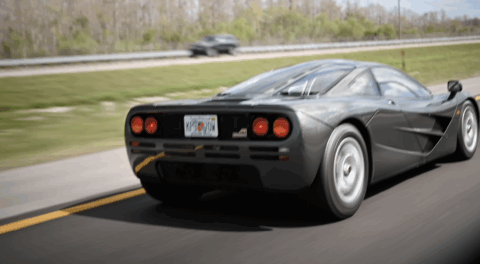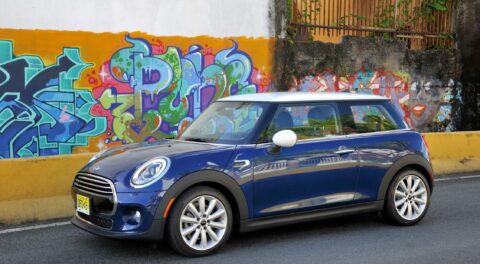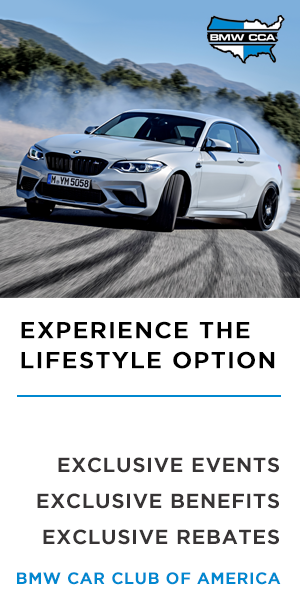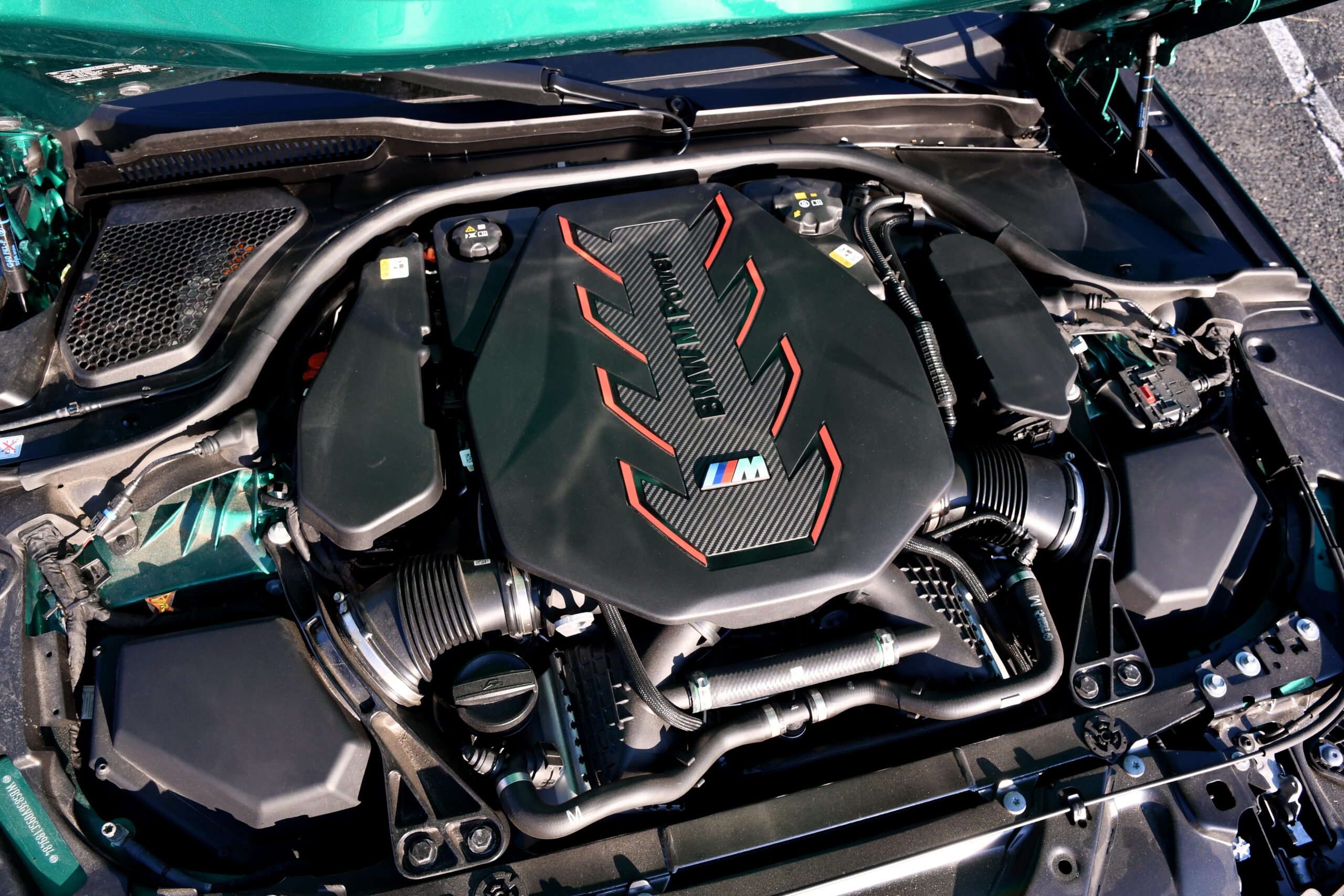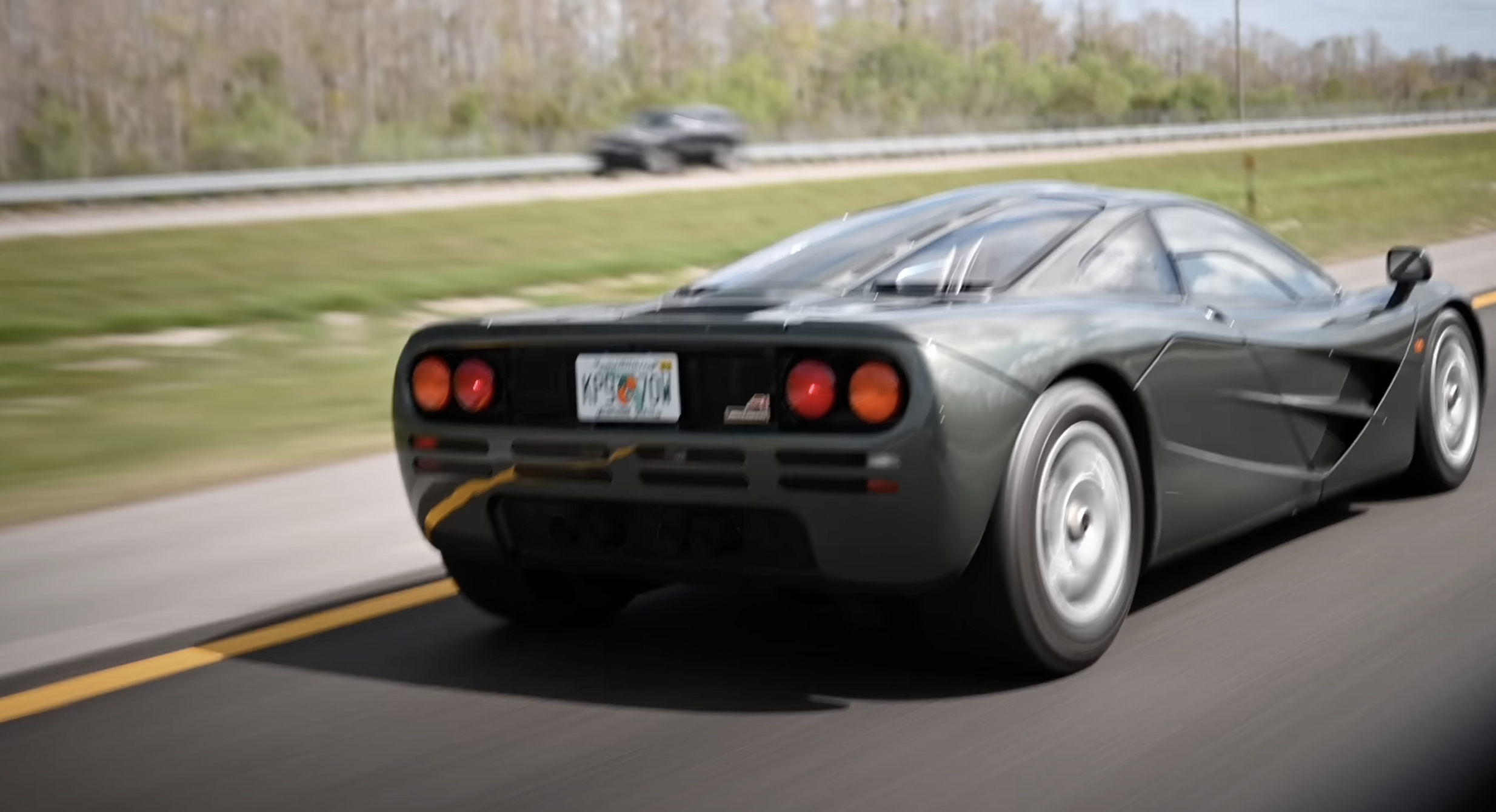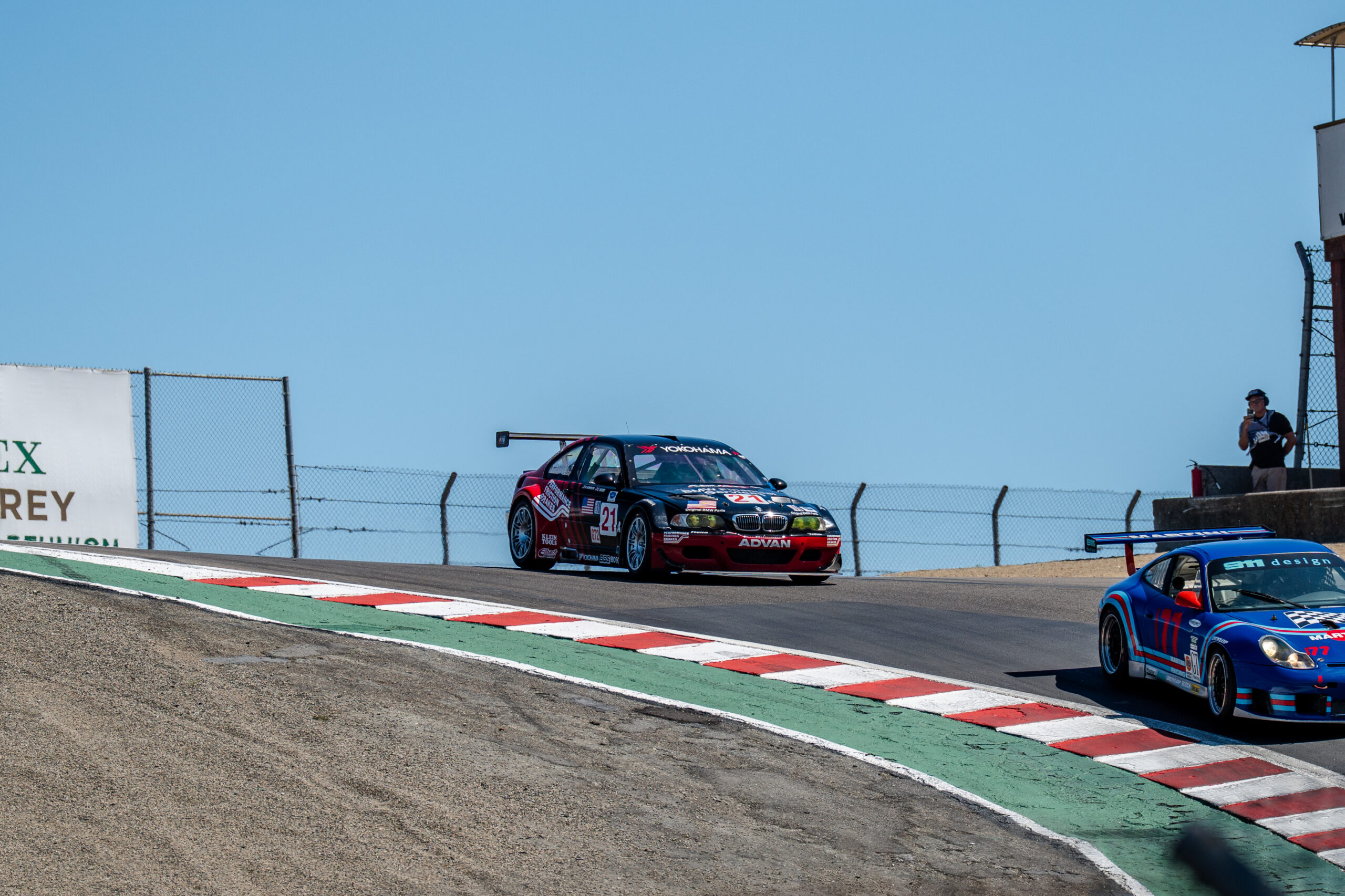There’s nothing quite like celebrating ten years of 2015 328i Sports Wagon (F31) ownership by failing Virginia State Safety Inspection!
What an embarrassment.
When the inspector called out “BMW [owner], come here.” I heard Winnie the Pooh’s voice in my head, responding with, “Oh, bother.” Actually, it may have been a bit more colorful than that, but the sentiment remains. Given that this was my first time failing a state safety inspection, I have a pretty good track record.
This M Sport-brake-equipped 3 Series wagon failed because of “front brake pads not making full contact with the rotors.” There was some rust on the interior side of the rotors due to not driving the car for a few days after some recent rain, which is a common occurrence for any steel-based brake rotors coming into contact with water. Given that the inspection station is very close to my house, the mighty four-piston front calipers, an a-la-carte option when we ordered this wagon, did not have ample opportunity to dissolve said rust en route.
Now, I could’ve simply gone out for a quick drive and performed a few hard stops to remedy this, but I could tell arguing wasn’t going to solve anything. The fact is, a few days prior to the inspection I measured the front rotors with a caliper and I knew the front rotors were just at their 28mm minimum thickness. I was planning to do a full brake job in the coming weeks anyway, but I thought I could get away with passing a safety inspection as there was plenty of pad left and the exterior rotor face looked perfectly fine. The time it would take to wait another hour-and-a-half in an inspection line would be better served simply replacing the pads and rotors. A “FAILED” sticker was placed on the windshield where the old inspection sticker used to be and the fourteen-day clock for reinspection started.
After some internet research and shopping around, I ordered new front and rear Zimmerman Z-coated blank rotors, new caliper bolts, and new rotor set screws from my go-to source, FCP Euro. Making things slightly complicated when ordering parts, there are a variety of sizes and options for F30/F31 pads and rotors. The M Sport brake option (S2NHA) is not the same as the M Sports Package (P337A) or the same as the non-factory M Sport brake upgrade (which uses 370mm front rotors). Additionally, things can differ between 328, 330, 335, and 340 models. Thankfully, between forums, FCP Euro’s website, and BimmerWorld’s website, I figured out the correct parts to order.
I didn’t actually need new pads as there was plenty of pad material left, but in an effort to eliminate any potential hassle I ordered new front and rear Akebono EUR pads (model EUR1880 front, EUR1656 rear) from Rock Auto. I also have these pads on my ‘91 318is and ‘98 M3 and absolutely love them for nearly zero brake dust while still maintaining good initial bite and pedal feel. They’re certainly not “track” pads, but that’s actually a good thing for street-driven cars.
The F30/F31 factory M Sport brake package (option S2NHA) for turbo-four-equipped cars consists of 340mm front rotors and 345mm rear rotors. These are a two-piece design with an aluminum hat from the factory. I opted for solid single-piece steel Zimmerman coated rotors as they are half the price of the two-piece versions. The single-piece steel rotors weigh about three more pounds per rotor than their two-piece counterparts, but, again, this isn’t a track car, it’s a daily driver.
- One piece, two piece.
- Red fish, blue fish.
This was the first time I’ve changed rotors on this proper-roof-length vehicle. The original rotors lasted a whopping 66,000 miles, so I was quite happy about that. Having watched FCP Euro’s DIY video, which details the tools necessary for the job, torque specs, and each step in the process, installation was a breeze. After using the front center jack point to lift the car onto jack stands, it was time for business.
The M Sport brake design makes things nice and simple, with only a couple of bolts and brake-pad pins to remove. First, remove the 6mm allen rotor set screw. Then use a small punch to knock the brake-pad pins and brake-pad clip out.
- Remove the 6mm allen rotor retainer screw.
- Knock out the pad retainer pins with a small punch and hammer.
Use a pair of screwdrivers to press the pads against the caliper pistons to make room for the new/thicker parts during reassembly. With the pins and clip removed, the pads slide out like toast out of a toaster.
Unbolt the two 18mm bolts holding the caliper to the hub. Hang the caliper with wire or string from the spring above—you never want to let it hang by the brake line. Remove the rotor, using a swift knock of a hammer on the brake rotor hub if it’s stuck. Use a wire brush to knock off any rust/scale on the hub itself, it’s the rotor’s mating surface and the rotor needs to sit perfectly flush.
- 18mm caliper bolt be gone!
- Hang the caliper from the spring.
- Bye bye hub rust.
Installation is the reverse of removal, applying brake grease to the back of the pads, anti seize on the rotor set screw and torquing everything to spec.
- Lube up the back of the brake pad.
- Just like a toaster.
- Pads in, awaiting pins and clip.
I did order $75 worth of eight new caliper bolts, in the updated E-torx E16 format compared to the older 18mm bolt format, so don’t think I cheap out on everything. While the front caliper bolts are torqued to 100 Nm, the rears involve a two-step sequence, first torquing to 30 Nm and then tightening another 90 degrees. Torque-to-yield bolts shouldn’t be reused—especially for what’s arguably the most important part of the car, the brakes.
- More new parts!
- The E16 replacements for the 18mm original caliper bolts.
The same afternoon I installed the brakes, I took it back to the same inspection station where I had failed the safety inspection. Was I a glutton for punishment? While the cost of a Virginia State Safety Inspection is $20, a re-inspection fee is only $1 at the same location. This time around there was no line and the F31 passed with no issues. Hurray.
What about the rear brakes? Well, I only had to replace the front brakes to pass inspection. The rear rotors and pads still have plenty of service life left in them–as verified by measuring with a caliper. Regardless, I did order new rear rotors and pads (and set screws and bolts) at the same time as I ordered the fronts, so those parts will wait on the shelf until they’re needed. Perhaps that will be when it’s not the middle of winter, and it’s more than 35 degrees in my garage. —Mike Bevels

